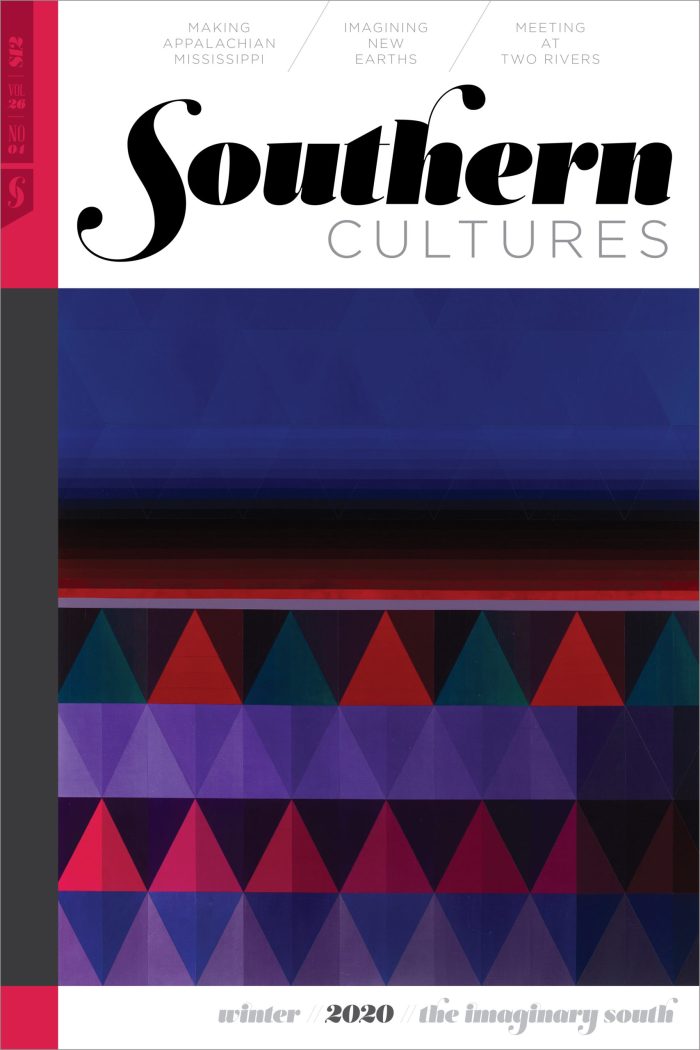Driving south on I-85 from Richmond into North Carolina, the trees begin to envelop you. Not being from here, I am seduced by that wilderness. It’s like entering an open storybook, a deep trove of mythologies and histories built into the landscape and etched into memory from the stories of others, both recent and generations past. And for some, these stories are not myths.
From my home state of New Hampshire to my new home in North Carolina, I had a simple hope to explore and understand the latter through their commonalities: the deep forests and rising mountain ranges, winding waterways, and abundance of roadside Cracker Barrels. In the rural stretch between Durham and Charlotte, North Carolina, is the fifty thousand-acre Uwharrie National Forest, named for the Indigenous tribe that once inhabited the mountains there. While researching North Carolina forests to explore, Uwharrie started to become synonymous with what I could only imagine to be a joke: Bigfoot sightings. It seemed I could not search for advice on traversing the Uwharrie range without coming across mentions of where this mythical creature could be found. Before long, I became entranced by stories and blurry photographs in online groups for Bigfoot enthusiasts. There are many: Bigfoot 911, North Carolina Bigfoot Investigations (NCBI), Bigfoot Campfire Stories, Squatcher X, Squatch Watchers, Dirty South Squatchers. The list goes on, ranging from forums of thousands of active members to neighborhood sightings, all with one common goal—to prove the existence of this elusive creature.
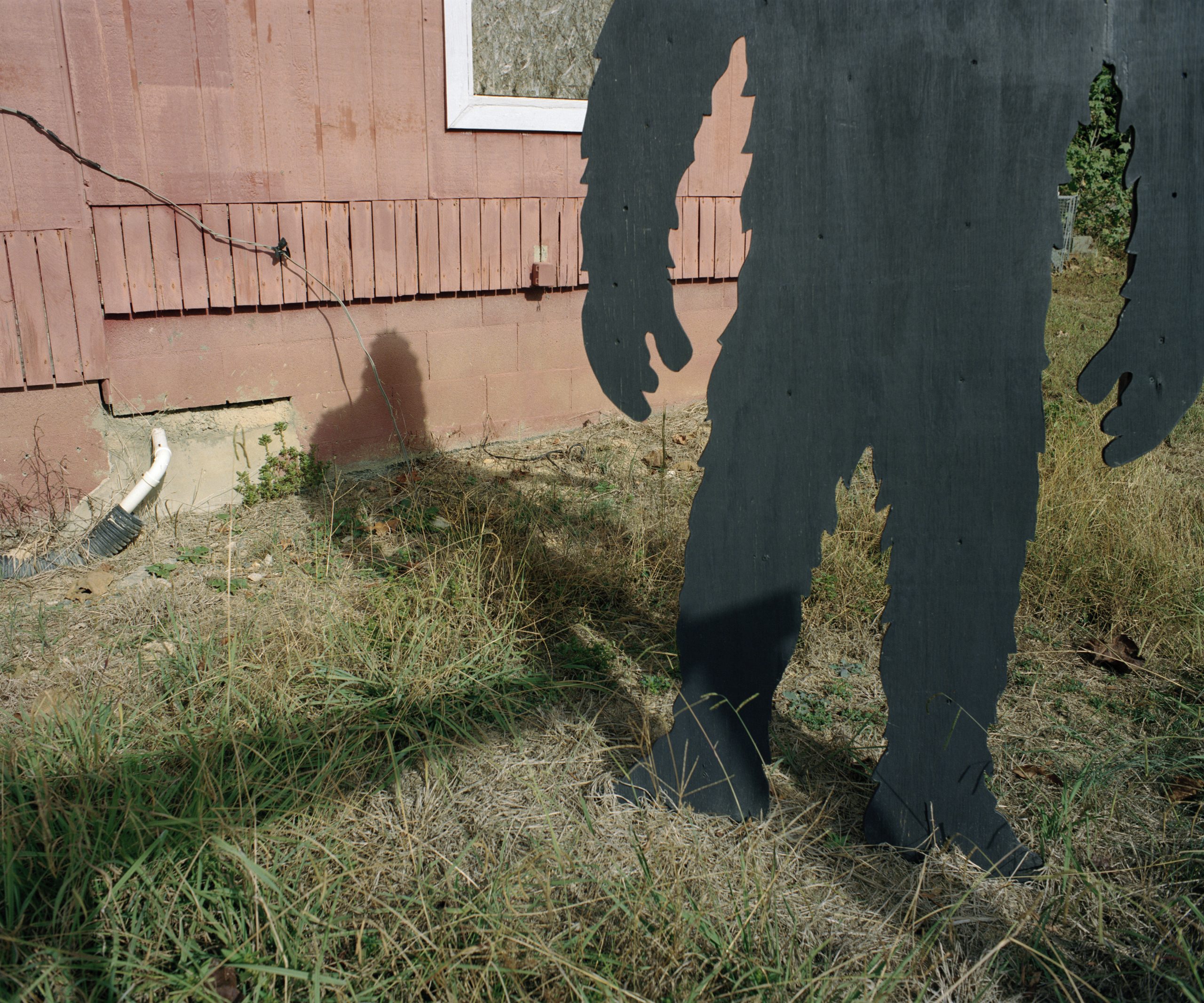
Sasquatch, a six- to nine-foot-tall ape-like being said to roam the forests of North America, is an indelible part of American and Canadian folklore. The name comes from the Salishan languages of the Pacific Northwest, the term se’sxac meaning “wild men.” And with thick shaggy fur and large feet, Bigfoot is often identified as male, but given the number of sightings, enthusiasts believe there must be an undiscovered species hiding in the woods. The famous Patterson-Gimlin film of the late 1960s made Bigfoot an American icon, with sightings now claimed all over the country. The southeastern United States continues to be a hotspot.
I make and study photographs for a living, so I was immediately attracted to and skeptical of the images of Bigfoot sightings in online groups. These photographs called into question the veracity of the medium, and what images tell us in context. And although there were skeptics like me about, the people who attended Bigfoot conferences, who distributed their evidence and stories, were still open to sharing. I joined a few groups and asked for help in locating a tour guide of Uwharrie National Forest. I was quickly referred to Dwight, a group leader and native North Carolinian who claimed he knew more than what the television shows are willing to reveal: the coveted Sasquatch locations and sighting spots deep in the woods. I sent the Bigfoot aficionado a private message on Facebook to see if he would take me out on the trails next time he went on a Bigfoot search—what I would later learn is called “squatching.”
It was a dreary April morning, and I almost canceled when I saw the rain coming down in sheets on my long drive from Durham. Pulling up to our meeting place, a stubby storefront named Eldorado Outpost, I could see its appeal in housing the only gas station and public bathrooms for miles. The smell of burnt bacon permeated the interior, beckoning hunters and off-roaders alike. But the biggest attraction might be the statue of Bigfoot that greets you when you walk in. Surrounded by tchotchkes, fishing line, and camping propane, the figure blends in nicely, as if he has earned his place there in the mountains just as much as the campers. I felt a wave of excitement about the creature’s appearance. This was no joke. This really was Bigfoot territory. And here he was, I had found him.
I met Dwight, this internet stranger, after a bit of awkward meandering since we were both there at the same time without knowing much of what the other one looked like. But it became clear who he was when he approached, his cowboy hat adorned with a classic Bigfoot silhouette. He mumbled some directions to me in a thick southern drawl before we got into our cars, me following him deeper into the forest. I felt slightly uncomfortable trailing this strange man down and around winding roads onto suddenly off-road dirt paths that were so crude I wondered if my two-wheel-drive Honda could handle them. We eventually arrived at what looked like a campsite. He began to unload his car when two dogs stuck their heads out the back.
“You know,” he mused, “you are mighty brave to come out here by yourself with someone you don’t know. Even I don’t come out here without my dogs.” Sheepishly, I acknowledged the possibility that I was too trusting, and I wondered which he considered the real threat, humans or Bigfoot.
Dwight and I set out, his dogs leading the way. Every once in a while he’d stop and investigate the scene, pointing out something a green Bigfoot researcher like me wouldn’t necessarily pick up on—an odd tree break or an intentional “X” crossing of branches, some muddy animal tracks or stacked rock formations. He was engrossed in the hunt for evidence. With a GoPro attached to his chest and another perched on a monopod, Dwight documented every angle, determined not to miss anything he could later reexamine. He would likely post some stills to the online group that night, too.
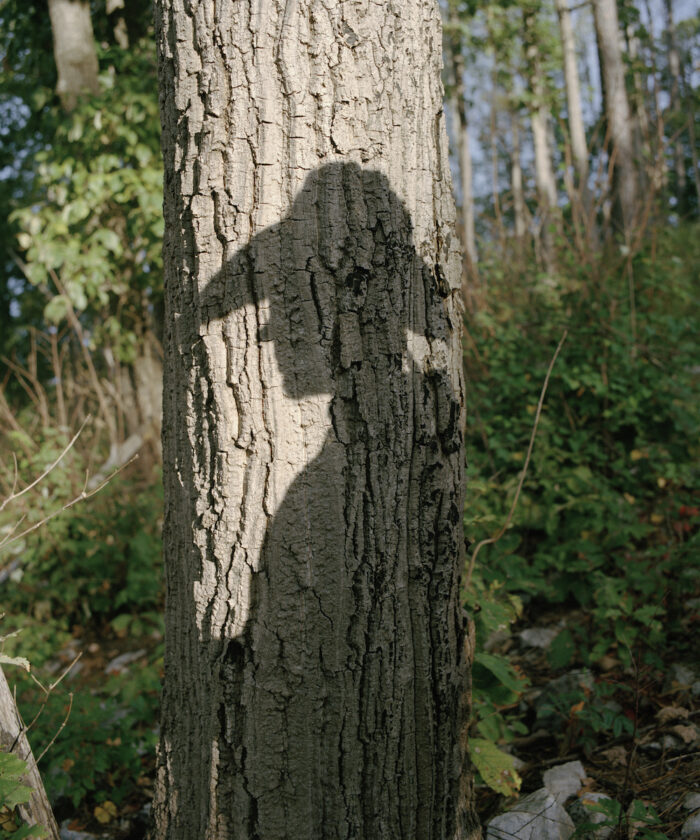
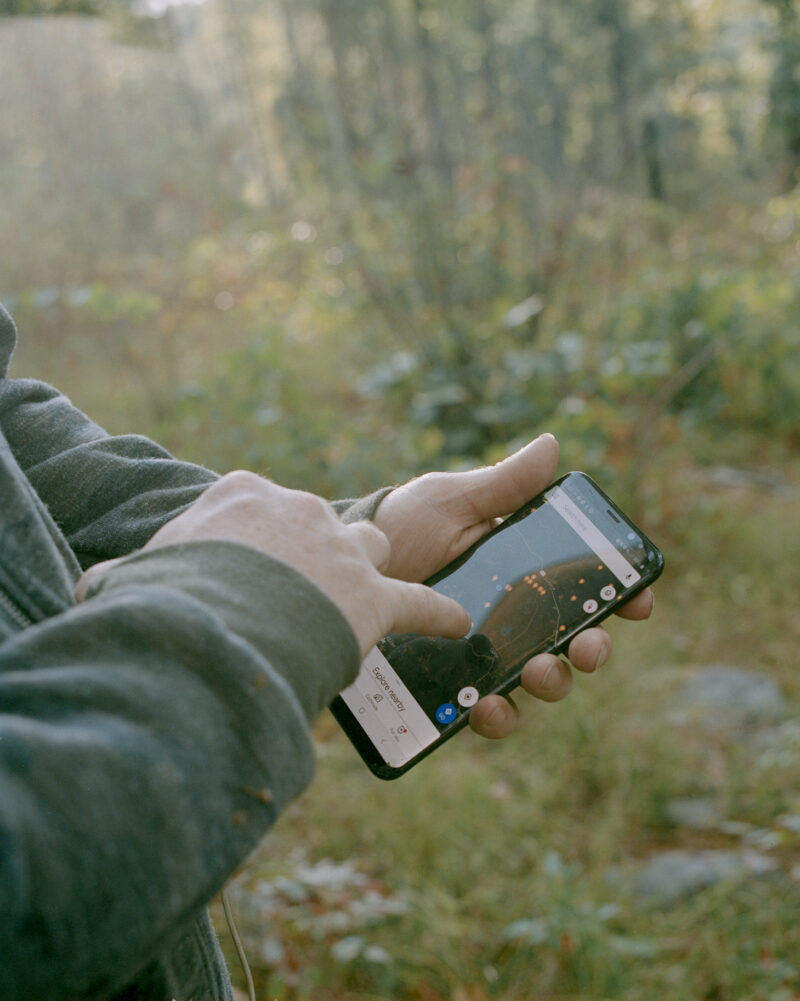
He told me how there’s a theory that Sasquatch (Sasquatches? Sasquai? Depends on who you ask) have underground caves where they sleep, only seldomly coming out to find food. He explained how they are omnivores, eating berries and greens just as often as a deer or a dog. He warned me to watch out for thrown rocks, as Bigfoot was rumored to chuck stones at people passing too close, adding that the online groups have posted dozens of videos showing it happening. The investigation was infectious, and, in a short time, I was looking for similar things myself, scouring the grounds for markings, ready to believe.
Dwight told me about his life, and I learned just how much time—maybe all of his free time—is dedicated to this search. He explained that his fascination with the legendary creature began in childhood and when television shows started to target the North Carolina woods he knew so well, he decided to investigate himself. His protective dogs, Goddi and Fendi, sniffed the trail as we walked. Off-leash at times, they darted past us, crossing in front. As we pressed on, Dwight asked me if I was aware of the Blue Ridge Bigfoot Conference, or the WNC Bigfoot Festival in Marion, neither of which I had heard of. He urged me to check them out if I could, suggesting there were much better researchers out there than him.
He subtly cross-examined me, too, clearly wondering if I was serious in my interest. Where was I from, why had I wanted to see a Bigfoot, what research had I done myself ? I assume he did this with people he thought were skeptics. Was I pandering to him, or was I starting to believe in the unseen? Truthfully, I wasn’t sure, but Dwight seemed grateful at least that I had brought a slew of cameras, admiring their capacity and professionalism. “Man, if we see something today, you better be ready with that thing,” he said, giving a point to the Pentax hanging around my neck.
And so we continued to walk, both of us documenting the evidence that would unfold in front of us, using Dwight’s expertise as the basis for successful discovery. From the first rolls of film, photographs of partial muddy footprints and broken stumps dominated, and I often turned the camera on my tour guide, too, as he became more integral to the search.
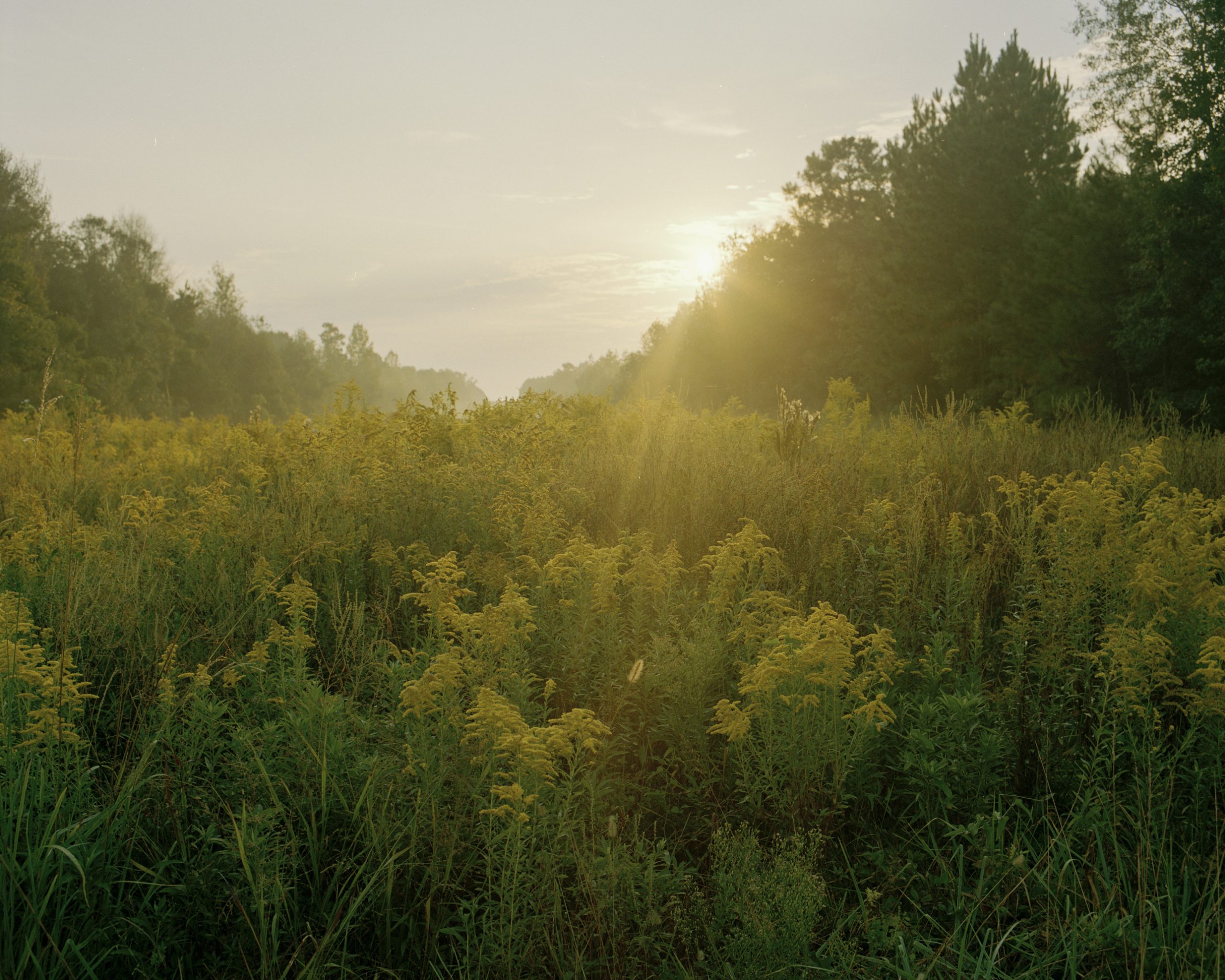
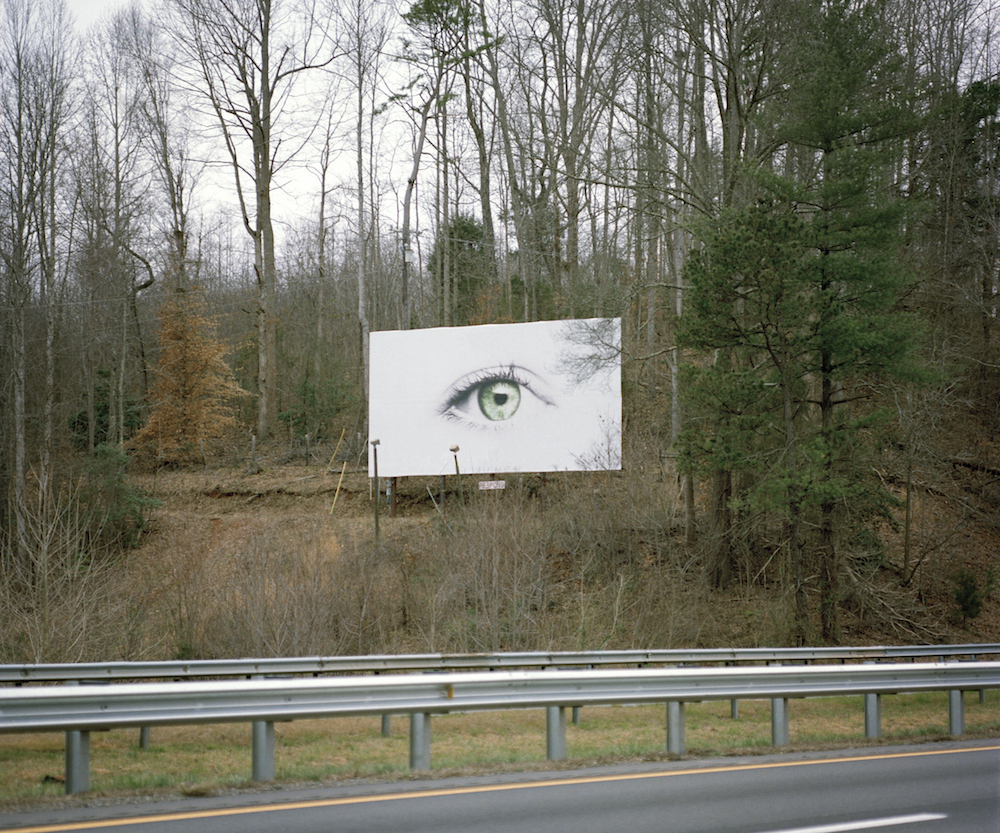
On the two-hour drive home, I couldn’t stop thinking about my first squatching experience—how silly it felt to be attempting to photograph Bigfoot, just following the breadcrumbs, hoping they would lead us to see the unseen. How much evidence would I need to persuade someone that Dwight’s research was not for naught? While lost in my thoughts, I rounded a curve in the road and suddenly found myself in view of the biggest birds I had ever seen, huddled around an animal carcass on the side of the road. I slowed and they seemed to peer at me menacingly. As I picked up my camera from the passenger’s seat, they flew off, leaving me with a blurry frame and little evidence of our encounter.
Explaining my Uwharrie project elicits some chuckles and stares. The barrage of questions that follows always seems to revolve around my personal belief in this imaginary figure, probably to see how far I have gone down the rabbit hole of my fieldwork. What I know is that Dwight’s passion for the search triggered something in me to keep looking. The challenge to seek the unseen was contagious. The more people I told, the more others started to look for or see Bigfoot, too. For a while, I could not go a week without getting a random message or email saying that someone had witnessed the creature: friends on their cross-country travels, professors watching the news, students who saw one on a camping trip. Everyone suddenly had their own anecdote to add to the narrative. I could not get rid of visions of this enigmatic being whose entire folklore is based on being elusive. A continual feedback loop of affirmation and looking. A basis for belief.
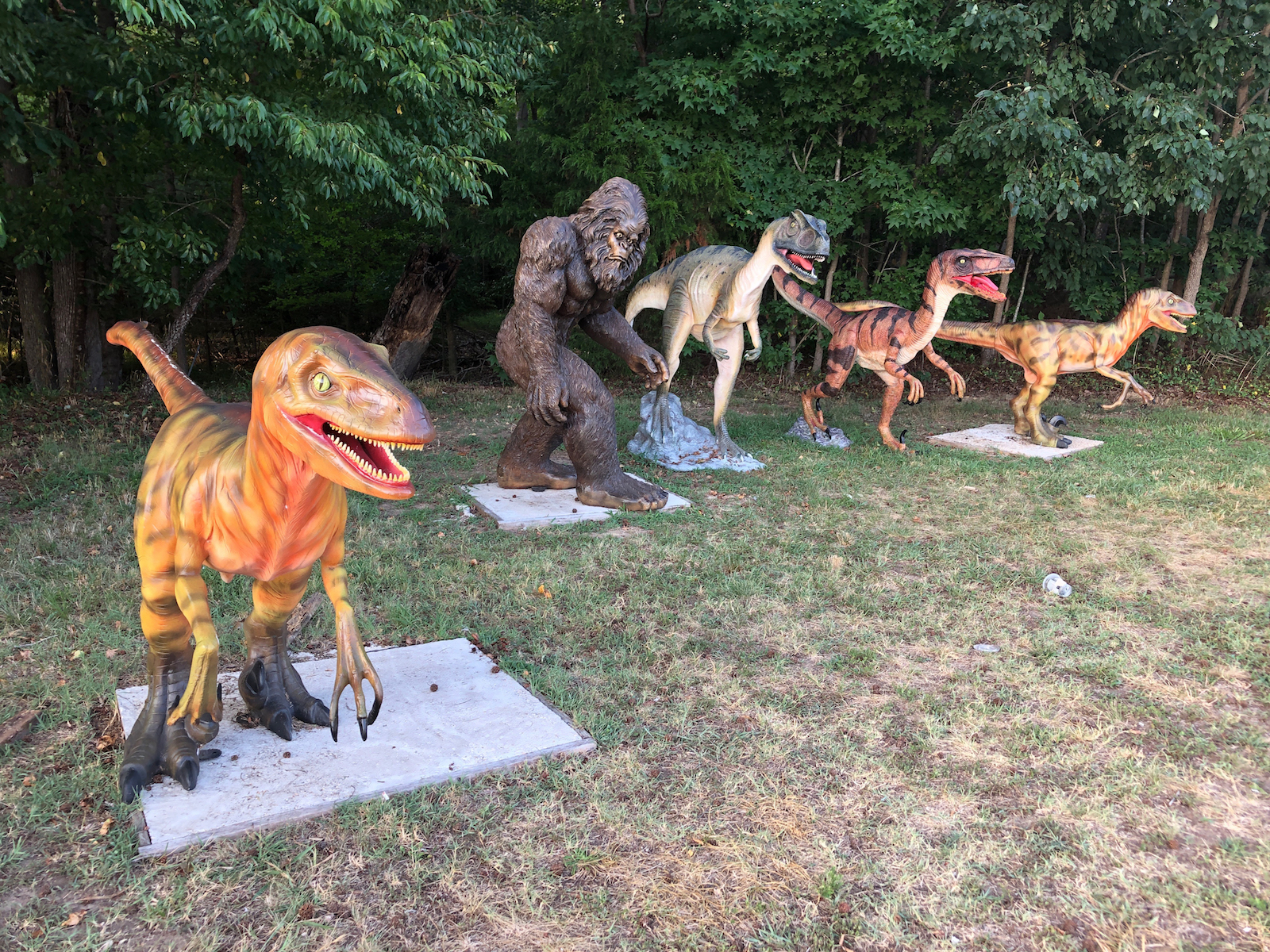
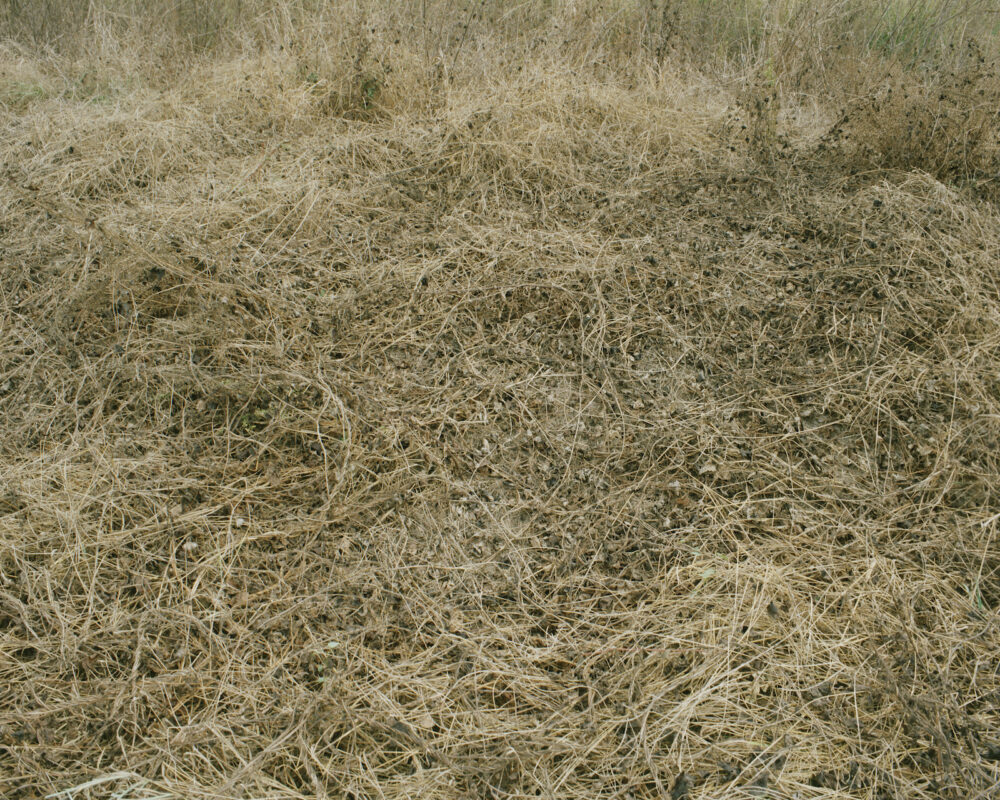
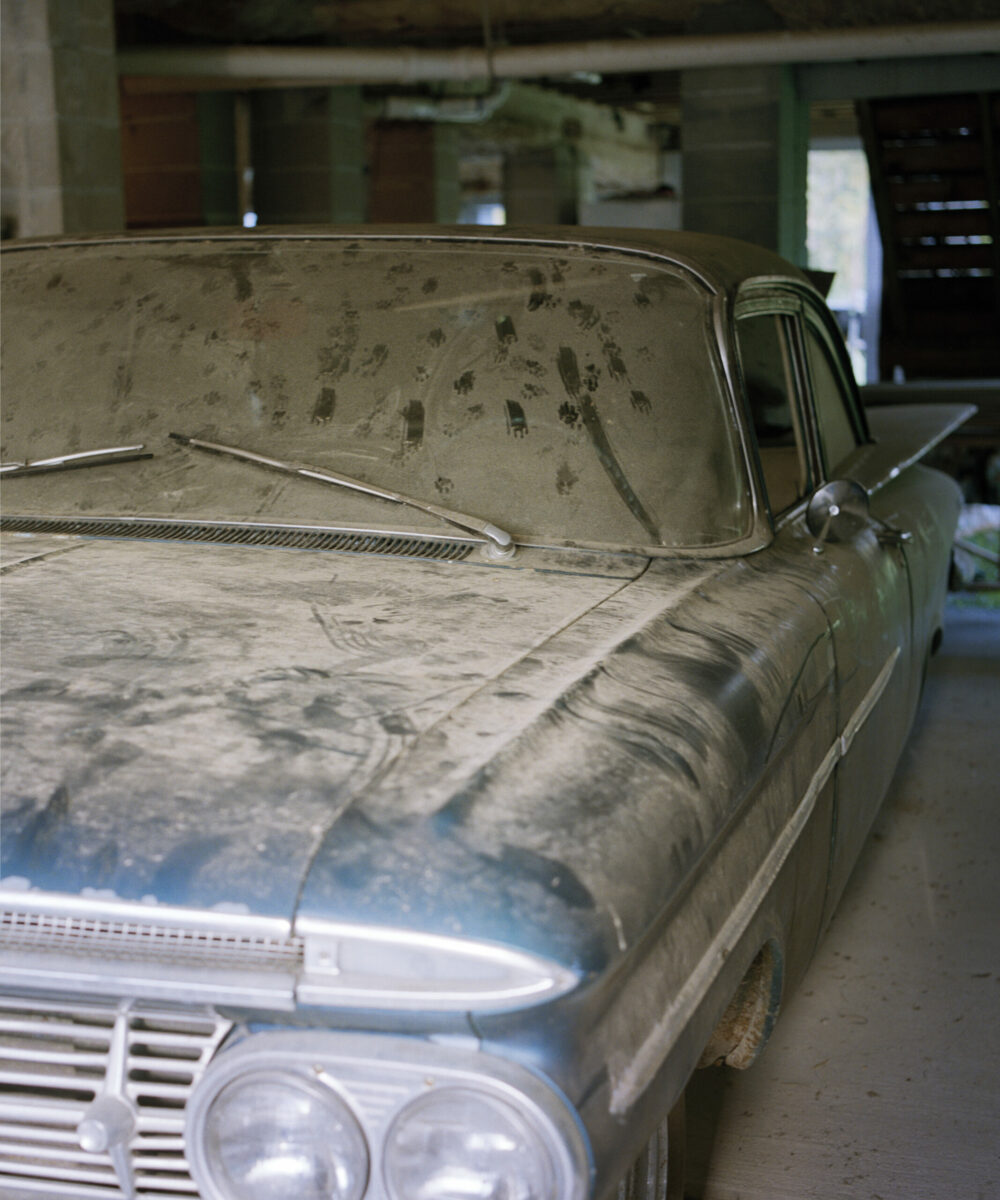
After a half dozen squatching trips in the Uwharries, Dwight brought me to the “X” on a brisk October day, leaves falling and clouds heavy overhead. He had raved about this to me before and kept telling me to remind him to take me there.
“Fendi led me right to it one day,” he told me through the crunch of brush beneath our feet. I had learned that Fendi was good at tracking Bigfoot—or, really, any animal activity. She darted past us, a blur of brown fur in the forest brush, circling back often to check in with her owner. Dwight calling her name periodically, and their chipper energy feeding off one another. We walked roughly thirty minutes up and down ravines covered in fallen trees, a controlled burn in the recent past still marking the landscape. Another twenty minutes in and slightly unsure of his bearings, Dwight stopped to reorient himself. Suddenly, he laughed and filled with excitement, Fendi running around his feet. I heaved myself up the last few steps of an incline and looked to see the striking “X” come into view. When we reached it, we both took a moment to catch our breath and stood in awe of this structure. Two thick tree branches crossed, one bent and curved but still rooted to the earth, the other picked up and moved into place, a chipped and rotting end exposing the mossy and moist interior. It would be a feat for a handful of men to hoist and bend trees of this size and width. Who would have the strength to do such a thing? Dwight knows.
“It’s said that Bigfoot will make these to mark locations within their parts of the woods,” he explained, “and this is the best one I’ve ever found.”
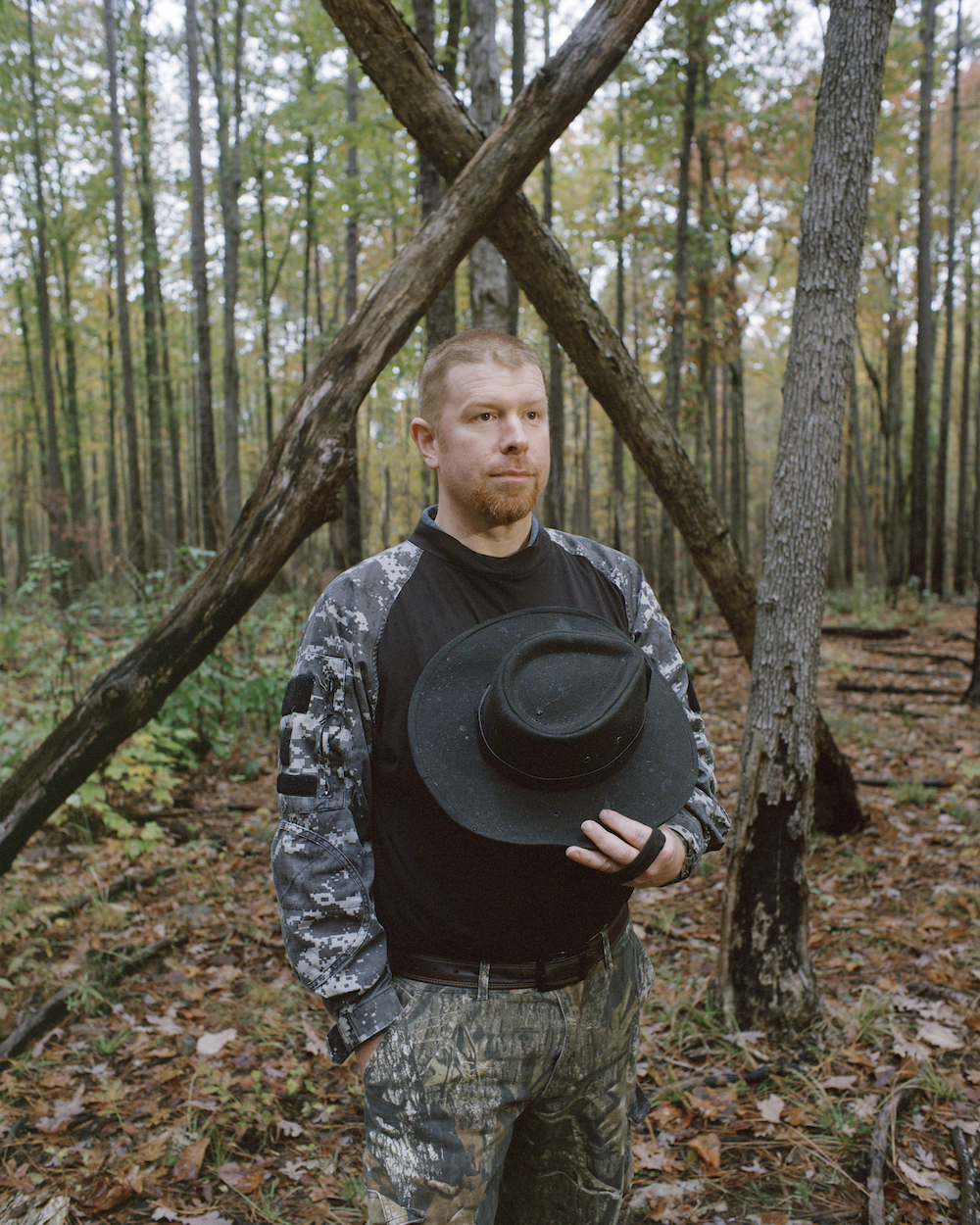
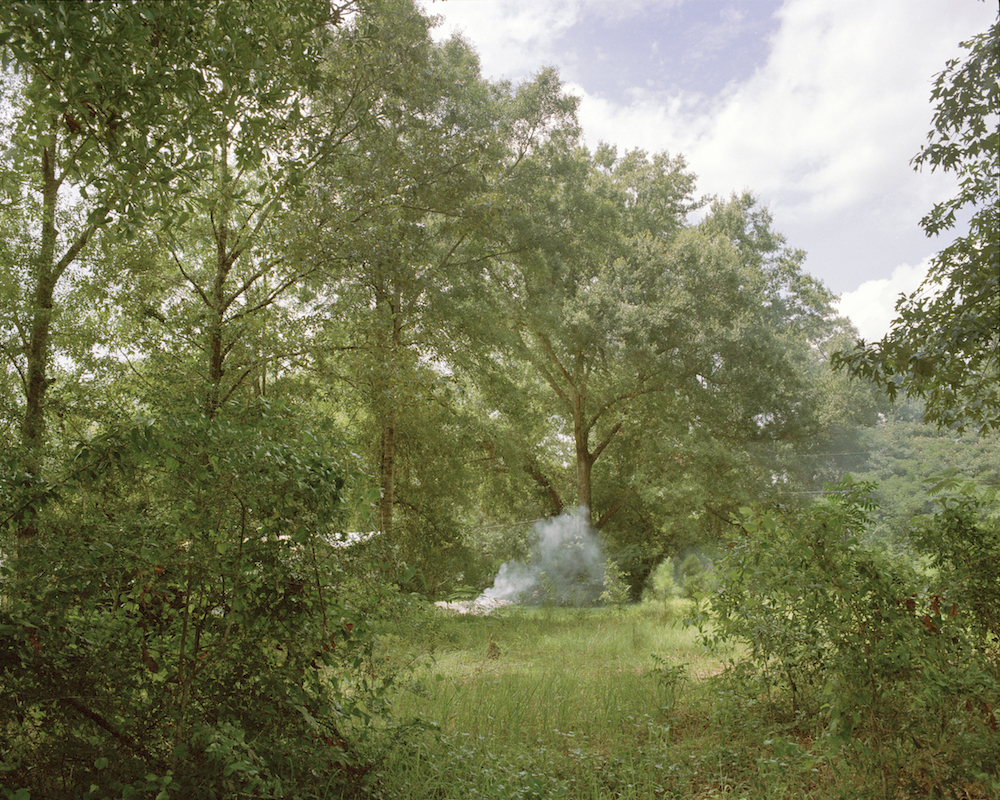
Neither Dwight nor I have yet seen a Sasquatch cross our paths, though I’d be lying if I said I didn’t think Dwight has gotten close. He’s probably the most sophisticated Squatcher I’ve met, with frequent outings, game cameras set up in the most obscure locations, and an endless number of photographs that show some part of the creature. But getting the evidence is only half the battle, as he and others on the forums persevere. What can a photograph truly show? How does a photograph validate the stories and experiences we share? And once we have this evidence, how do we truly get people to believe in what we have seen?
Dwight’s search for the elusive parallels my search with a camera. When we’re on the right track, we move forward and explore further, both of us investigating the southern mythos through stories and clues. And I am constantly seeking the moment of affirmation—from myself and what I’ve learned through years of practice and searching of my own—of when to click the shutter. My friendship with Dwight has enabled me to examine the multitude of ways that we are all seeking the unseen and commingling truth and belief.
This essay first appeared in the Imaginary South issue (vol. 26, no. 4: Winter 2020).
Cassandra Klos is a fine art photographer currently living between Durham, North Carolina, and Boston, Massachusetts. She is a 2020 graduate of Duke University’s Experimental and Documentary Arts MFA program. Her work has been exhibited across the United States, and has been published in TIME, National Geographic, Wired, and Bloomberg Businessweek, among other publications.

